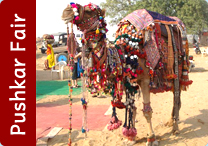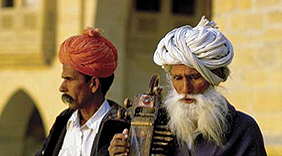
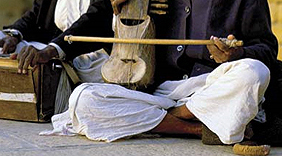

Custom Made Tour
Feel free to let us know if you are looking for customize tour program as all the tour itinerary is sample it can be modify according to your requirements.
Rajasthan Heritage Tour
Duration : 23 Nights / 24 DaysDestination : Delhi - Jaipur- Mandawa - Bikaner - Jaisalmer - Jodhpur - Mount Abu - Udaipur - Chittaurgarh - Kota - Ranthambore - Agra - Delhi

Rajasthan Heritage Tour Highlight
| City | Tour Highlight |
| Delhi | Red Fort, Raj Ghat, Jama Masjid, Chandni Chowk, India Gate, President's House, Humayun's Tomb & Qutub Minar Optional Sound & Light Show at Red Fort with dinner at Chor Bizarre |
| Jaipur | Elephant ride to Amber Fort Palace , City Palace, Jantar Mantar (Observatory) & Hawa Mahal (Palace of Winds) |
| Mandawa | Havelis (Mansion) of Goenka, Gori Shankar & Choudaharia with Frescoes |
| Bikaner | Junagarh Fort & Lal Garh Palace |
| Jaisalmer | Jaisalmer Fort , Jain Temple, Patwon Ki Haveli & Camel Safari |
| Jodhpur | Mehrangarh Fort & Jaswant Thada |
| Mount Abu | Dilwara Temple, Museum and Boating. |
| Chittaugarh | Chittor Fort, Rana Kumbha Palace, Victory Tower, Palace of Rani Padmini, Tower of Fame & Palace of Patta & Jaimal |
| Kota | Umaid Bhavan Palace & jag Mindar |
| Ranthambore | Tigers, Fort & Jeep Safari |
| Agra | Taj Mahal, Agra Fort, Sikandara |
Day 01 : Arrival at Delhi
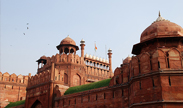
Later in first half of 20th century much of New Delhi was planned by Sir Edwin Lutyens, who laid out a grandiose central administrative area as a testament to British rule in India. The division in walled city & New Delhi also marks the division in life styles.
Overnight Hotel - Delhi
Day 02 : Delhi
Today we take a guided tour of Old Delhi, the 17th century walled city of Shah Jehanabad, Visiting the great Jama Masjid, the principal mosque of Old Delhi. Built in the year 1656 AD by the Mughal Emperor Shah Jahan, it is the largest & best known mosque in India. Later we walk down or take a rickshaw ride through Chandni Chowk, the old marketplace of Shah Jehanabad now a picturesque bazaar to reach Red Fort, built in the year 1648 by Shah Jehan.
 In New Delhi, we visit Raj Ghat, memorial to the Father of the Nation, Mahatma Gandhi. It is a simple black marble platform that marks the spot of his cremation on 31 January 1948. Further we drive past India Gate, memorial built in the year 1931 to commemorate the Indian soldiers who died in the World War I & the Afghan Wars. The names of the soldiers who died in these wars are inscribed on the walls. President's House, the official residence of the President of India, built in the year 1931. Until 1950 it was known as Viceroy's House & served as the residence of the Governor-General of British India. We will also visit Humayun's Tomb, memorial of Mughal Emperor Humayun, built in the year 1562. The complex is a World Heritage Site & the first example of this type of Mughal architecture in India. Qutub Minar, built in the year 1206 by Qutub-ud-din Aibek. It is the tallest (72m) brick minaret in the world, an important example of Indo-Islamic Architecture. Qutub Minar & its monuments are listed as a UNESCO World Heritage Site. Overnight at Delhi.
In New Delhi, we visit Raj Ghat, memorial to the Father of the Nation, Mahatma Gandhi. It is a simple black marble platform that marks the spot of his cremation on 31 January 1948. Further we drive past India Gate, memorial built in the year 1931 to commemorate the Indian soldiers who died in the World War I & the Afghan Wars. The names of the soldiers who died in these wars are inscribed on the walls. President's House, the official residence of the President of India, built in the year 1931. Until 1950 it was known as Viceroy's House & served as the residence of the Governor-General of British India. We will also visit Humayun's Tomb, memorial of Mughal Emperor Humayun, built in the year 1562. The complex is a World Heritage Site & the first example of this type of Mughal architecture in India. Qutub Minar, built in the year 1206 by Qutub-ud-din Aibek. It is the tallest (72m) brick minaret in the world, an important example of Indo-Islamic Architecture. Qutub Minar & its monuments are listed as a UNESCO World Heritage Site. Overnight at Delhi. Day 03 : Delhi - Jaipur(By Road 258 km/05 hrs)
Breakfast at hotel, drive to Jaipur, reach Jaipur. A warm welcome by local tour manager.
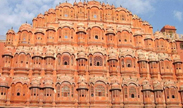
Day 04 : Jaipur
Breakfast at hotel. Proceed for morning sightseeing of Jaipur covering the important palaces and monuments.
CITY PALACE - A delightful blend of Mughal and traditional Rajasthani architecture, the City Palace sprawls over one-seventh of the area in the walled city. It houses the Chandra Mahal, Shri Govind Dev Temple and the City Palace Museum.
JANTAR MANTAR - This is the largest and the best preserved of the five observatories built by Jai Singh II in different parts of the country. This observatory consisting of outsized astronomical instruments is still in use.
HAWA MAHAL - The ornamental facade of this "Palace of Winds" is a prominent landmark in Jaipur. Its five-storey structure of sandstone plastered pink encrusted with fine trelliswork and elaborate balconies. The palace has 953 niches and windows. Built in 1799 by Pratap Singh, the Mahal was a royal grandstand for the palace women.
Shopping in the city. Overnight at Jaipur.
Day 05 : Jaipur - Mandawa (By Road 160km/03 hrs)
Breakfast at hotel. Proceed for Mandawa.
 The medieval Fort of Mandawa gradually rises on the horizon like a mirage. A breathtaking view of the town can be seen from the terrace of Castle Mandawa. Precious collection of arms with jade handles, traditional ceremonial costumes can be seen at the Museum at the Castle. The havelies worth a visit are Chokhani, Saraf, Goenka and Ladia in this town. Built in 1775 by Thakur Nawal Singh, descendant of Rao Shekhaji, who also founded the city of Nawalgarh. The Castle, now a 51 rooms hotel has no two rooms alike. It also houses an interesting collection of paintings, jade, costumes and antiques. The courtyard and the terrace come to live during evenings with candle-lit dinners and fire-dances during the season. A two hundred and forty year old fortess, that has been converted by the family into a fine example of traditional hospitality. Reach and check in at hotel.
The medieval Fort of Mandawa gradually rises on the horizon like a mirage. A breathtaking view of the town can be seen from the terrace of Castle Mandawa. Precious collection of arms with jade handles, traditional ceremonial costumes can be seen at the Museum at the Castle. The havelies worth a visit are Chokhani, Saraf, Goenka and Ladia in this town. Built in 1775 by Thakur Nawal Singh, descendant of Rao Shekhaji, who also founded the city of Nawalgarh. The Castle, now a 51 rooms hotel has no two rooms alike. It also houses an interesting collection of paintings, jade, costumes and antiques. The courtyard and the terrace come to live during evenings with candle-lit dinners and fire-dances during the season. A two hundred and forty year old fortess, that has been converted by the family into a fine example of traditional hospitality. Reach and check in at hotel. Entering the gates, onto the sandy courtyard, you leave behind all traces of the present, becoming a part of a legend, a fantasy! War scarred turrets, lofty domes, heroic cannons that seem to look down at you, as silent retainers in green appear to whisk you away, the tails of their orange 'safas' flapping in the gentle breeze, mark your arrival to the fanciest destination in Shekhawati. Caparisoned camels and horses saunter in, carrying the guests as musicians blow horns and drums roll the Royal Welcome. In the Castle, step into an arched open-fronted verandah and wander in the under the high ceilinged 'Diwan Khana' (Darbar Hall), where the walls adorned with ancient portraits of the Mandawa family, recall a bygone era that was royal, rich and resplendent.
Relax for the evening. Overnight at Mandawa.
Day 06 : Mandawa
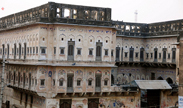
Chowkhani Haveli, Gulab Rai Ladia Haveli, Lakshminarayan Ladia Haveli, Mohahanlal Saraf Haveli and Bhagchandika Haveli are of special interest. Spend the major part of the day looking into frescoes. Overnight at Mandawa.
Day 07 : Mandawa - Bikaner (By Road 200 km/4hrs)
Breakfast at hotel. Proceed to Bikaner. Reach Bikaner and check in at hotel.
The royal fortified city with a timeless appeal. Lying in the north of the Desert State, the city is dotted with many sand dunes. Bikaner retains the medieval splendor that pervades the city's lifestyle.
More popularly called the camel country, the city is renowned for the best riding camels in the world. The ship of the desert is an inseparable part of life here. Be it pulling heavy carts, transporting grains or working on wells, camels are the prime helpers. The wells of Bikaner - an important source of water are other attractions of the city. These are built on high plinths with slender minareted towers on each of the Four Corners and can be noticed even from a distance. Relax in the evening. Overnight at Bikaner.
Day 08: Bikaner - Jaisalmer (By Road 340 km/ 6hrs)
Breakfast at hotel.
 Proceed for Jaisalmer. Rising from the heart of the Thar Desert like a golden mirage is the city of Jaisalmer. A commanding fort etched in yellow sandstone stands, with its awesome splendor, dominating the amber-hued city.
Proceed for Jaisalmer. Rising from the heart of the Thar Desert like a golden mirage is the city of Jaisalmer. A commanding fort etched in yellow sandstone stands, with its awesome splendor, dominating the amber-hued city. The city has an interesting legend associated with it, according to which, Lord Krishna-the head of the Yadav Clan, foretold Arjuna that a remote descendent of the Yadav Clan would build his kingdom atop the Trikuta Hill. His prophecy was fulfilled in 1156 AD when Rawal Jaisal, a descendent of the Yadav Clan and a Bhatti Rajput, abandoned his fort at Lodurva and founded a new capital -Jaisalmer, perched on the Trikuta Hill. Reach and check in at hotel. Overnight at Jaisalmer.
Day 09: Jaisalmer
After a relaxed breakfast proceed for full day sightseeing tour of The Golden City - Jaisalmer. It is in the heart of the Great Indian Desert. Its temple, fort and palaces are all built of yellow stone. The city is a mass of intricately carved buildings, facades and elaborate balconies. Visit the JAISALMER FORT - The oldest living Fort in the world. (This is the highlight of the tour)
See the Patwon-Ki-Havelies, Salim-Singh-Ki-Haveli and Gandhi Sagar Tank. Also visit Barabagh Hill. Overnight at Jaisalmer.
Day 10 : Jaisalmer
Breakfast at hotel. Day will be free to explore the culture of this unique city.
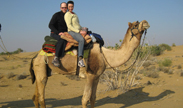
Return to the village to drive back to Jaisalmer after a Rajasthani dinner served in the village amidst Rajasthani musicians playing haunting tunes. Overnight at Jaisalmer.
Day 11 : Jaisalmer - Jodhpur( By Road 330 km/ 6hrs)
Breakfast at hotel. Proceed for Jodhpur. Reach and check in at hotel.
Set at the edge of the Thar Desert, the imperial city of Jodhpur echoes with tales of antiquity in the emptiness of the desert. Once the capital of the Marwar state, it was founded in 1459 AD by Rao Jodha-chief of the Rathore clan of Rajputs who claimed to be descendants of Rama - the epic hero of the Ramayana. The massive 15th century AD Mehrangarh Fort looms on the top of a rocky hill, soaring 125 Mts. Above the plains. The city is enMagleved by a high wall -10 km long with 8 gates and innumerable bastions.
Relax in the evening or proceed for shopping. Overnight at Jodhpur.
Day 12 : Jodhpur
Morning go for a village safari in the jeep and have a rare glimpse into the rich culture and true essence of India. Abundant wildlife (game) and memorable moments of the great desert landscape fascinates one while driving along the countryside.
 Afternoon sightseeing tour of Jodhpur - gateway to the desert beyond, home of the Rathors of Marwar, visit the Mehrangarh Fort, rising up a hilly scarp, built on the advice of a hermit, overlooking the city in the image of a long sentinel. Inside the Fort are a number of palaces added by successive rulers. In this palace you would see different miniature paintings & cradle room. After this you would visit Jaswant Thada Memorial. Proceed to visit the UMAID BHAWAN PALACE. Overnight at Jodhpur.
Afternoon sightseeing tour of Jodhpur - gateway to the desert beyond, home of the Rathors of Marwar, visit the Mehrangarh Fort, rising up a hilly scarp, built on the advice of a hermit, overlooking the city in the image of a long sentinel. Inside the Fort are a number of palaces added by successive rulers. In this palace you would see different miniature paintings & cradle room. After this you would visit Jaswant Thada Memorial. Proceed to visit the UMAID BHAWAN PALACE. Overnight at Jodhpur.Day 13 : Jodhpur - Mt Abu ( By Road 320 km / 7hrs)
Proceed to Mt Abu after breakfast. Reach Mt. Abu. Transfer to hotel.
At 1,200 meters, Mount Abu is the highest point of the Aravalli range passing through Rajasthan. The only hill resort of Rajasthan. It is build around a lake and is surrounded by forested hills. According to the legend, the place derives its name from ARBUDA, a serpent who descended to the spot to rescue Shiva's bull NANDI. Besides having all the features of a pleasant hill resort, this place is also famous for the DILWARA TEMPLES and many more archeological remains. There are romantic royal retreats and relics of the Raj.
Enjoy boating at the Nakki Lake and visit the temples and the museum in the afternoon. Overnight at Mount Abu.
Day 14 : Mt. Abu
Breakfast at hotel. Day will be at Mt Abu. Visit the Dilwara Temples during the day. The architecture of these temples is very interesting and famous. Relax during the evening. Overnight at Mount Abu.
Day 15 : Mount Abu - Udaipur(By Road 185 km /5 ½ hrs)
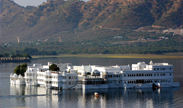
The city of Dawn, Udaipur is a lovely land around the azure lake, hemmed in by the lush hills of the Aravallis. A vision in white drenched in romance and beauty, Udaipur is a fascinating blend of sights, sound and experiences and inspiration for the imagination of poets, painters and writers.
Its kaleidoscope of fairy-tale palaces, lakes, temples, gardens and narrow lanes strewn with stalls, carry the flavor of a heroic past, epitomizing valor and chivalry. Their reflection in the placid waters of the Lake Pichhola is an enticing sight. Udaipur is the jewel of Mewar -a kingdom ruled by the Sisodia dynasty for 1200 Years.
Proceed for Evening Motor launch cruise on the placid waters of Lake Pichola. From he boat you will be able to view the city of Udaipur as it rises majestically above the lake in the middle of the Rajasthan desert. Also visit the Jag Mandir - the other island palace in the middle of the lake. Spend some time at the Jag Mandir. Relax in the evening. Overnight at Udaipur.
Day 16 : Udaipur
Breakfast at hotel. Proceed for day sightseeing tour of Udaipur, stopping first at City Palace. Here you will marvel at rooms with mirrored walls and ivory doors, colored glass windows and inlaid marble balconies and the Peacock Courtyard.
Also visit the lovely Sahelion-ki-Bari Gardens, the Jagdish Temple and the local folk Museum. Overnight at Udaipur.
 In the afternoon, proceed for motor-launch cruise on the placid waters of Lake Pichola. From the boat you will be able to view the city of Udaipur as it rises majestically above the lake in the middle of the Rajasthan desert. Also visit the Jag Mandir - the other island palace in the middle of the lake. Relax or shopping in the afternoon. Overnight at Udaipur.
In the afternoon, proceed for motor-launch cruise on the placid waters of Lake Pichola. From the boat you will be able to view the city of Udaipur as it rises majestically above the lake in the middle of the Rajasthan desert. Also visit the Jag Mandir - the other island palace in the middle of the lake. Relax or shopping in the afternoon. Overnight at Udaipur.Day 17 : Udaipur - Chittaurgarh (By Road 121 km / 3 hrs)
After breakfast drive to Chittaurgarh.
The pride and glory of Rajasthan, Chittaur echoes with the tales of romance and valor unique to the Rajput tradition. A ruined citadel - Where the royal past lives in its imposing forts, graceful palaces and spectacular chattris.
This fortified settlement has been ravaged thrice and each time the outcome was 'Jauhar'-when women and children immolated themselves on a huge funeral pyre while men donned in saffron robes of martyrdom rode out of the fort towards a certain death.
Proceed for sightseeing of CHITTAURGARH FORT - Believed to have been constructed by the Mori rulers in the 7th century, this fort is located on a 180m high hill, covering 700 acres. "Tablets" and "Chattris" lie between several monumental gates. Visit PADMINI PALACE - The palace of the legendary queen of Mewar. Overnight at Chittaurgarh.
Day 18 : Chittaurgarh - Kota(By Road 121 km / 3 hrs)
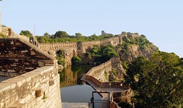
Along the eastern bank of the Chambal River lies Kota - an amazing juxtaposition of the majestic medieval age and modern industrialization, temples and untouched wealth of impressive forts, opulent palaces and splendid temples. Kota dates back over several centuries but still retains its past glory, present day edifices and heavy industries. The industries have made it the industrial heartland of Rajasthan.
The history of the city dates back to the 12th century AD when the HADA Chieftain, Rao Deva, conquered the territory and founded Bundi and Hadoti. Later, in the early 17th century AD during the reign of the Mughal Emperor Jahangir, the ruler of Bundi -Rao Ratan Singh, gave the smaller principality of Kota to his son, Madho Singh. Since then Kota became a hallmark of the Rajput gallantry and culture.
Relax for the day. Overnight at Kota.
Day 19 : Kota
Breakfast at hotel. Proceed for sightseeing.
Brijraj Bhawan Palace, a colonial style palace, situated on the bank of river Chambal, was build in the early nineties. The palace has large spacious rooms that are tastefully done up with antique furniture. An intresting feature of the palace is the fact that almost all the rooms overlook the Chambal river providing an arrresting view of the mighty river.
Umed Bhawan Palace is one of the most beautiful palaces of Kota. Built in 1009 by Maharao Umed Singh II of Kota. This palace was designed by Sir Swinton Jacob who spent many years in Rajasthan. The overall design of the palace is European. There is an Edwardian drawing room, a billiard room and a very well laid out garden surrounding the palace.There are long corridors, courtyard and Italian marble floors.
 Chambel Garden The lush green garden at Amar Niwas makes a lovely picnic spot. While absorbing the ambience of the place one can enjoy a boat ride.
Chambel Garden The lush green garden at Amar Niwas makes a lovely picnic spot. While absorbing the ambience of the place one can enjoy a boat ride. Maharao Madho Singh Museum situated in the old palace, it houses a rich collection of Rajput paintings of the Kota school, exquisite sculptures and other valuable antiques. The museum is the treasure house of artistic items used by the rulers of kota.
Relax in the evening. Overnight at Kota.
Day 20 : Kota - Ranthambore (By Road 173 km / 4hrs)
Proceed to Sawai Madhopur after a relaxing breakfast. Reach and check in at hotel.
Ranthambhore National Park - the famous Tiger Reserve, just 12 kms away from here. Ranthambhore has been a witness to the rise and fall of many rulers and a series of battle scenes. In the 13th century AD, Govinda, the grandson of Prithviraj Chauhan took over the reign of the land. Later his successor Vagbhatta, beautified the city and built a noteworthy temple at Jhain. In the middle of the 5th century AD, Rana Kumbha captured the fort and gifted it to his son to be occupied later by the Hada Rajputs of Bundi and Mughal Emperors, Akbar and Aurangzeb. Mughal Emperor Shah Alam gifted it to Maharaja Sawai Madho Singh I of Jaipur in 1740's and since then it was maintained as the hunting preserve of the Maharaja. (Queen Elizabeth II and the Duke of Edinburgh were part of the royal hunting parties who stayed here.
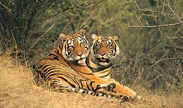
Ranthambhore forest is of tropical dry deciduous type further classified as Dhok climax forest because of the predominance of Dhok (Anogeissus pendulla) found nearly everywhere. Dhok is an extremely hardy tree, capable of withstanding prolonged droughts. The leaf of this tree is good fodder and they are browsed by herbivores, and form a significant part of their diet. Even the dry, fallen leaves, eaten by them, are rich source of nutrition.
The lakes abound with aquatic vegetation including Duckweed, lilies and lotus. A haven for a multitude of wild animals, the Park boasts of playing host to tigers, leopards, the elusive hyenas, sloth bears, wild boars, crocodiles and so on. Besides, there are over 300 species of birds, from the majestic Crested Serpent Eagle to the exotic Golden Oriole.
Tiger, at the apex of the food chain, lord over the kingdom in a subtle way. Solitary by nature, it operates in stealth. Therefore tiger sightings, frequent as they are, are always a matter of chance. However, even evidences of tiger's activities are very exciting.
Ranthambhore is also very rich in bird life with over 300 species of birds. In fact, for a keen bird-watcher Ranthambhore and its surrounding areas are paradise. Birds like Greylag geese, Bar headed geese, Painted stork, Pochards, Gadwall, Mallard, Tawny Eagle, Greater and Lesser Spotted Eagle, the rare Black Eagle, Greater and Lesser Flamingoes and many more are regular winter migrants which come from their nesting grounds north of Himalayas to Ranthambhore and surrounding areas.
 During summers also there are many migratory species of birds that come to this region from southern parts of India and Srilanka. Such species include Indian Pitta, Asian Paradise Flycatcher, Painted Snipe, Common Hawk Cuckoo (or Brain Fever Bird) and Golden Oriole.
During summers also there are many migratory species of birds that come to this region from southern parts of India and Srilanka. Such species include Indian Pitta, Asian Paradise Flycatcher, Painted Snipe, Common Hawk Cuckoo (or Brain Fever Bird) and Golden Oriole. Besides Tiger, there are many other animals to observe, understand and enjoy, Elegant and graceful Spotted Deer, huge Sambar, Crocodiles basking around the banks of the lakes, Vultures soaring in the sky, Crested Serpent Eagle scanning the ground from its perch or the kaleidoscope of waterfowls at the pools are all the interest for a visitor with sensitivity. Relax for the day. Overnight at resort.
Day 21 : Sawai Madhopur
Breakfast at hotel. Game drives can be availed through the day as per annexure given at the end of the itinerary. Overnight at resort.
Day 22 : Sawai Madhopur - Agra (By Road 270 km/ 6hrs)
Proceed by surface for Agra after breakfast. Reach Agra and check into hotel.
Badal Singh established the city of Taj in 1475. Agra finds mention in the Mahabharat as Agraban. This city in those days was considered to be the sister-city of Mathura, which was more prominent than Agraban. Agra came into its own when the Lodhi Kings chose this place beside the RIVER YAMUNA to be their capital city. Sikander Lodhi made Agra his capital but Babar defeated the Lodhis to capture not only Agra but also laid the foundation of the Mughal empire.

In the Mid 16th century and earlier 17th century Agra witnessed a frenzied building activity and it was during this time when the symbol of love Taj Mahal was built. The buildings made during this era were purely in the contemporary Mughal style and of very high quality. The same is still reflected in whatever monuments remain in Agra. The narrow lanes of Agra filled with aroma of Mughlai cuisine, the craftsman who are busy in crating master pieces with their skill all remind of the Mughal royalty which this city had once experienced. Today whatever remains, has become a major tourist attraction which has taken Agra again to the heights of glory but this time as a major tourist destination of India. Overnight at Agra.
Day 23 : Agra - Delhi (By Road 201 km / 4hrs)
Breakfast at hotel. Proceed for sightseeing.
Visit the TAJ MAHAL - one of the Seven Wonders of the World was built by Shah Jahan in 1631 AD and was completed in 1651AD. Taj Mahal - The symbol of Love was built in the memory of Mumtaz Mahal (Shah Jahan' s second Wife).
AGRA FORT - Built by the famed Mughal emperor Akbar in 1565 AD, the fort is predominantly of red sandstone. Ensconced within is the picture perfect Pearl Mosque, which is a major tourist attraction. After Agra Fort we will visit BABY TAJ - The interiors of which are considered better than the Taj.
 Proceed to Delhi via Sikandra and the holy city of Mathura. Reach Delhi and check in at hotel. Overnight at Delhi.
Proceed to Delhi via Sikandra and the holy city of Mathura. Reach Delhi and check in at hotel. Overnight at Delhi. Day 24: Delhi - Home - Breakfast at hotel.
Transfer to airport or station in time for flight or train or leave by surface for the next destination.


